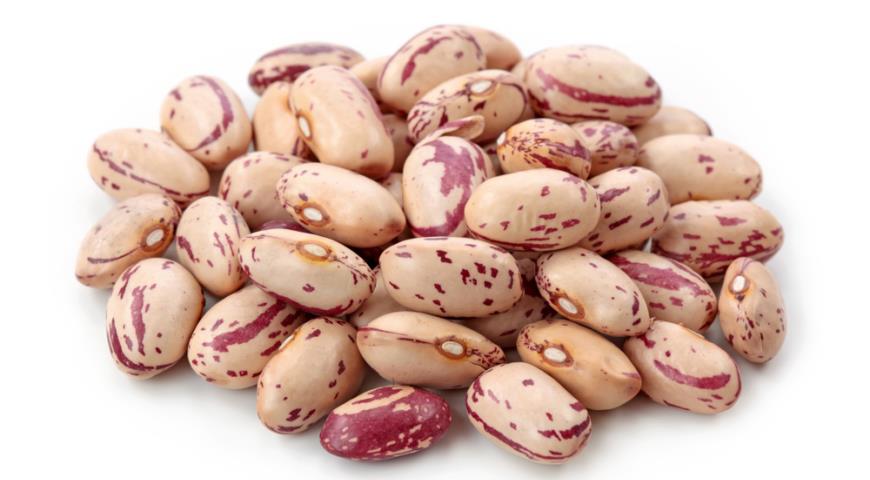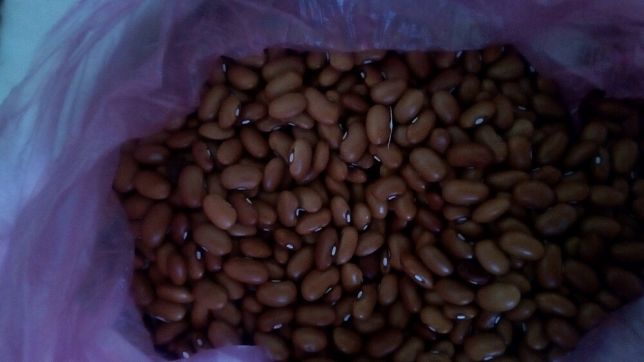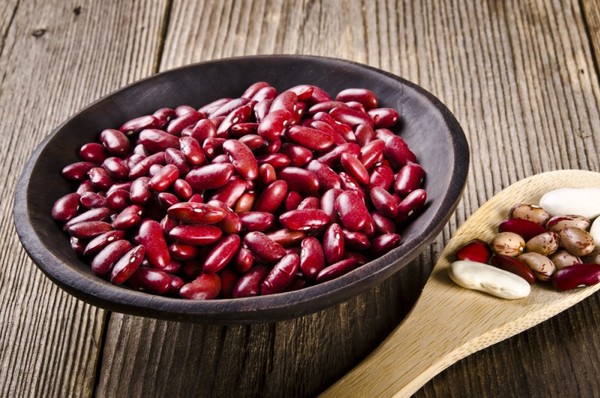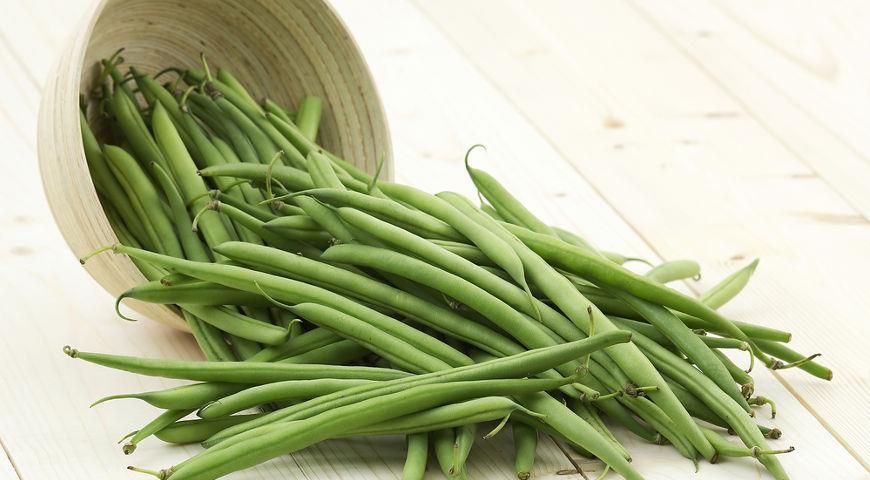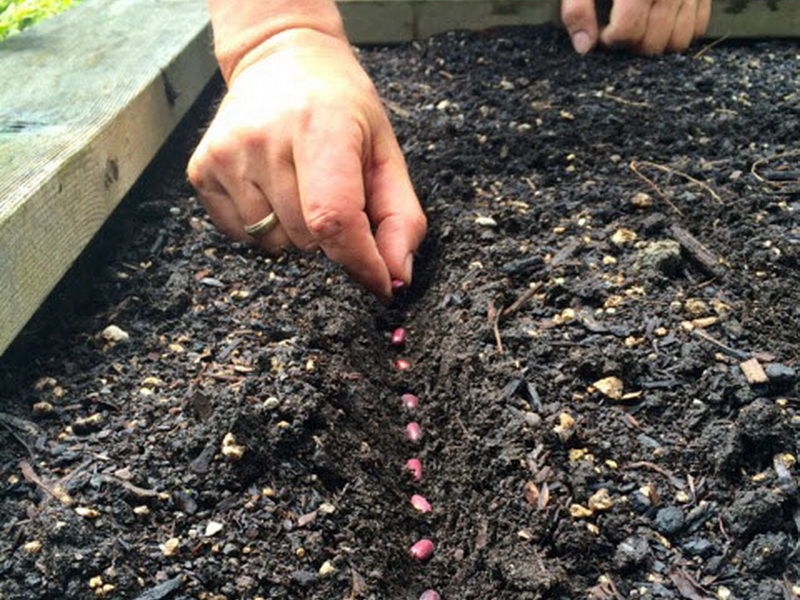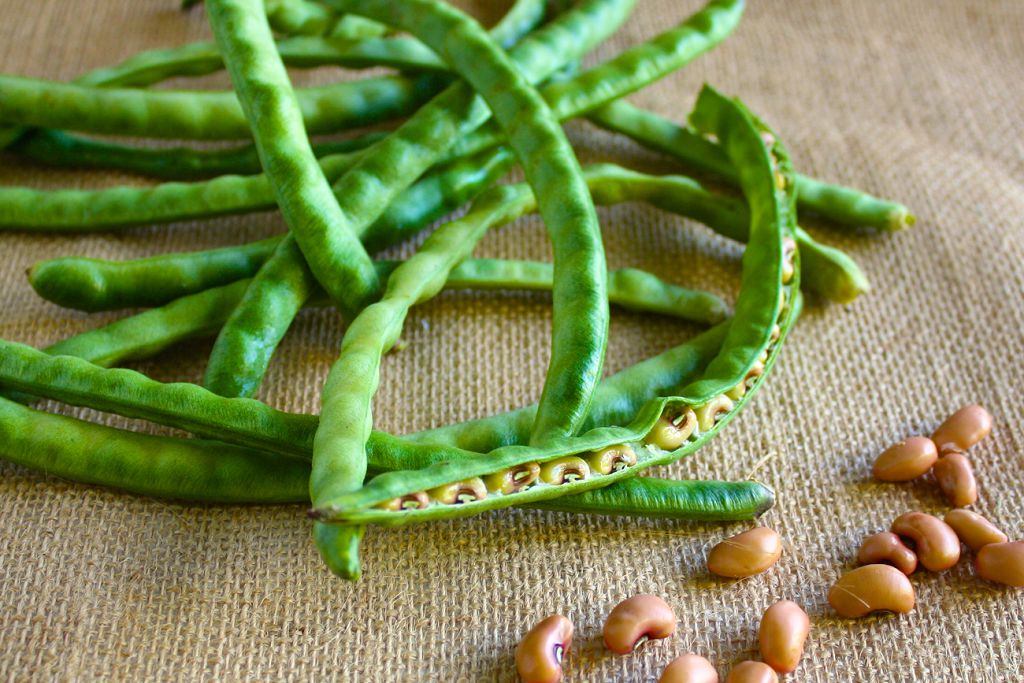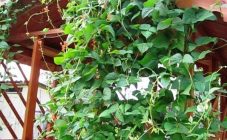Beans belong to the legume or moth family. The plant is herbaceous, annual, grows up to 2 meters, has a tap-branched root. The stem, depending on the variety, can be curly or straight, highly branched or rarely hairy, leaves are paired and pinnate, trifoliate, cordate or pointed. The flowers are racemose inflorescences of red, white or purple, hidden in the leaf axils, fruits - beans from 2 to 8, have the shape of a cylinder or oval, flattened or voluminous, 5-20 cm long and 1.5-2 cm wide, themselves the seeds resemble an ellipse in shape, 0.5-1.5 cm in size and in color - white, black, variegated or speckled, mosaic or spotted.
Of all the legumes, beans are the most popular, the only place where they are not grown is Antarctica.
In Russia, beans appeared only in the 18th century. They brought her from Turkey and France, that's why they called her "French bob". There are about 200 types and varieties of beans, and this is only today. The most common is common beans.
Beans can be classified as strategic products because in its chemical composition, it is close to fish or meat and can replace them in extreme conditions. In addition, its protein is assimilated by humans by more than 75%, while acting as an energy and building material in the body. During heat treatment, beans almost do not lose their useful properties, retaining up to 70% of vitamins and 80% of minerals. Beans are not only a food crop, they are used in official and folk medicine to treat a number of diseases. It is useful for rheumatism, bladder, kidney and liver problems.
What are the types of beans
Popular varieties of beans:
- Pinto;
- Kidney;
- Flat Sidun;
- Shrub;
- Stringy long;
- Large white;
- Red;
- Pink;
- Brown;
- Yellow;
- Spotted.
How different types of beans look like, how to choose the necessary one in terms of nutritional properties, unpretentiousness, taste and other qualities is described below.
Pinto beans translated from Spanish means "painted", because the beans are similar to the canvases of great artists. After cooking, the bright picture is lost, but this is compensated by the most delicate taste of the finished product.
The cultivation of Pinto beans is popular in the USA and Latin America, there are many recipes for its preparation, soups (including tomato beans) are made from them, added to burritos, and chili is made from it. it is a good source of high quality vegetable protein. In addition, this type of beans is used to lower blood cholesterol.
You should not store finished Pinto for more than three days in the refrigerator. Store dry beans in an airtight container, without mixing with another one purchased earlier or later, no more than six months.
Kindi beans are a variety of common beans, origin - Peru, the group of these legumes has been replenished with purple, variegated red and black varieties. It is produced in India, China and Brazil. Relatively inexpensive in price and not inferior in taste to other species. Kidney beans are second to none when eaten with rice, especially wild beans, salads and stews.
You should not store ready-made Kindi for more than one day, while dry one should be stored for more than 6 months.
Sidun is a flat bean that is purplish-white in color. It is used in the fight against the Colorado potato beetle. The plant is planted in the rows of potatoes, thereby surviving the pest, because he cannot stand Sidun, it benefits not only the plant, but also the person.
Bush beans have a special place in vegetable gardens and cultivation. Here are the top 5 early-maturing bush beans:
- Oil king is an asparagus, bountiful harvest. Grows in open ground in latitudes with moderate weather conditions, sowing in late May, collection of seeds in July. Ripe pods are golden green in color. This species has no fibrous structure and parchment layer;
- Sachs 615 - sweet asparagus variety, resistant to diseases, sown in May in open ground, harvesting is necessary every 50-60 days. Ripe pods have a pale pink color, the total yield per 1 m2 is about 2 kg.
- Nagano - also asparagus, early ripening, 4 to 10 white beans in a pod, harvest every 45-50 days.
- Inga- bushy, dwarf, early collection of beans, every 45-48 days, disease resistant and picky, has white seeds weighing 1.5-2 g, yield more than 2 kg per 1m2;
- Bona - sugar, early ripening, however, it has only 4 beans in a pod and a yield of only 1.4 kg per 1m2, collecting a larger number of beans from this variety is a rare case.
To obtain high yields of beans more than 3.5 kg per 1 m2, it is worth buying the following varieties of bush beans:
- Note;
- Fatima;
- Cinderella;
Bush beans are easy to grow in seedling culture, they do not need to be tied up and trellis installed.
What is the name of green beans? It is called Vigna - easily digestible, rich in micro - and macronutrients, dietary. It is also called "Chinese beans". This type of long green beans is easy to cultivate, frost and drought tolerant.
Beans should be cooked fresh, they should be no more than three days old, and frozen for the winter.
This type of beans is useful for those who want to lose weight, replenish the supply of vitamins and minerals, in addition, it has a beneficial effect on the nervous system, kidneys and helps to remove excess water from the body.
Large white beans were first grown in South America. It is unpretentious to care for, easily adapts to different climatic conditions. In terms of its taste, it is second only to potatoes.
Popular varieties of this species:
- Chali;
- Black eye;
- Navy;
- Moscow white;
- White flat;
- Lotus;
- Belozerka;
- White mares.
The beans are planted in open ground, they like light, weekly watering and weeding, after the seeds germinate, they need to be sprinkled, so they will be more resistant.
Red kidney beans are one of the first types, rich in protein, fiber and trace elements, which have a beneficial effect on the cardiovascular system, skin, kidneys and mass index.
Brown beans belong to the shelling varieties of beans, they do not require freezing in winter, they are also good for the body and can become a delicious lunch, dinner or pie filling.
Yellow beans are tender, melting in the mouth, like any other, they must be soaked in water before cooking, which is drained after 1 hour.
Spotted beans, similar to the legumes described above, also have a number of beneficial properties.
Features of agricultural technology
There are some general tips for growing beans.
- Preparing the soil for planting - a couple of days before planting: dig up and furrow the ground with a rake;
- Seed preparation: sort out and exclude the damaged ones, before planting in the ground, pour the beans with hot water (about 70 degrees) and let it brew for 10 minutes;
- Choose a method of agricultural technology: wet (warm water is poured into the groove, seeds are spread, sprinkled first with soil, then with sawdust) or dry (the same process, only in dry soil);
- For some types of beans, supports are required, for example, trellises or a garter of bushes;
- The next stage is loosening, it must be done immediately after seed germination, but very carefully;
- Fertilizers are applied in a month from the moment of planting, the next top dressing - in 20 days from the previous one;
- Legumes are very fond of water, so it is necessary that during the period of pod formation the soil is always moist;
- And, of course, pest control. The enemies of beans are slugs and a disease called downy mildew;
- Harvesting can be done after 2-3 weeks from flowering.
Beans are a picky plant for growing in a summer cottage, useful in their properties, rich in vitamins, microelements, high-quality protein, having a great variety of species and colors. Everyone today will be able to find beans that they like.
